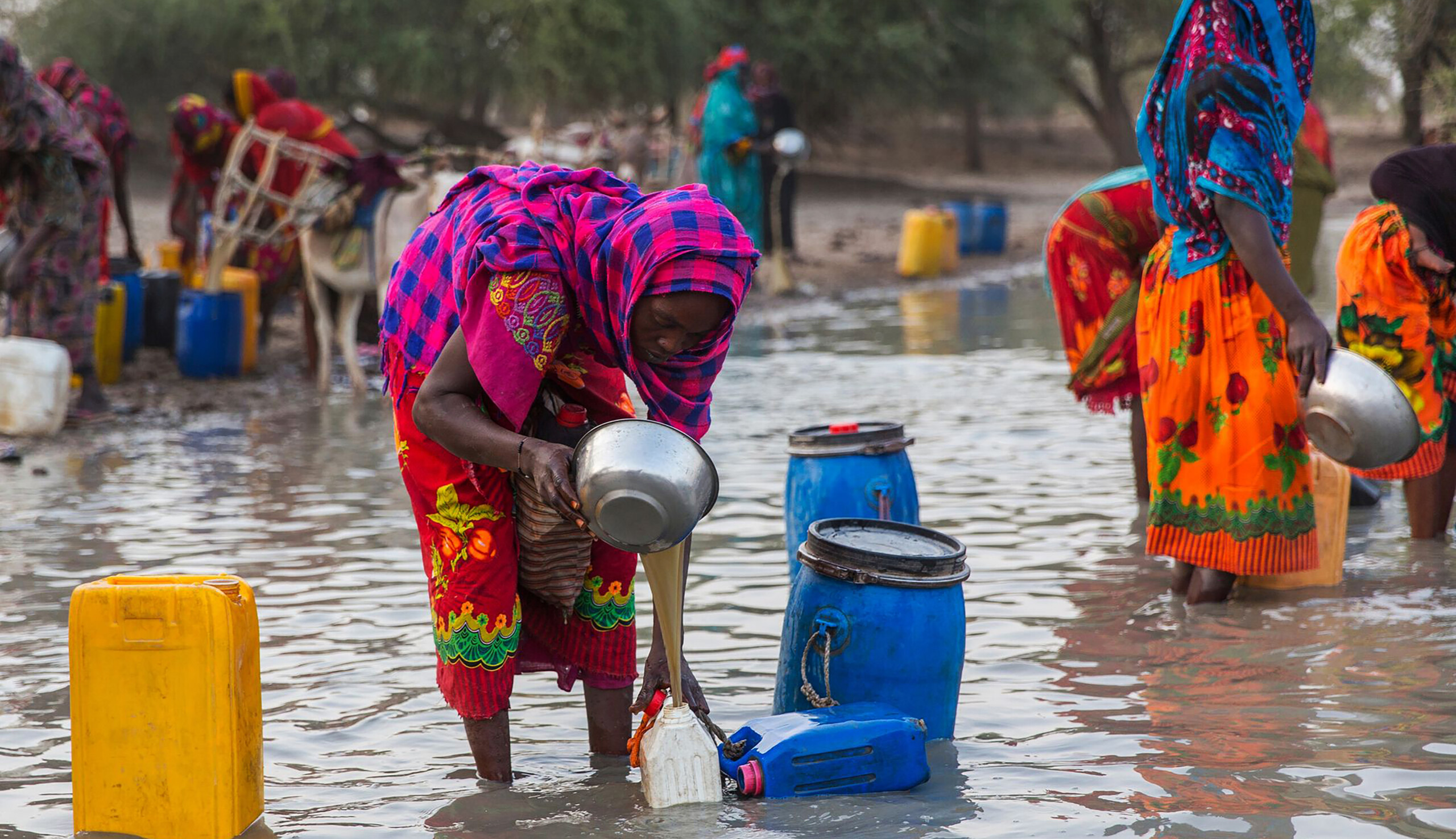Water scarcity: diseases, open defecation, and migration

Water scarcity: diseases, open defecation, and migration
Currently, 1.42 billion people live in an area of high, or extremely high, water vulnerability. Of these, 450 million are children. The rights to water and sanitation have been recognized since 2010, nonetheless, approximately 785 million people still do not have access to potable water. The right to water entitles everyone to access sufficient, safe, and affordable sources of water for both personal and domestic use. The right to sanitation entitles everyone to access sanitation services that are both safe and hygienic, and that provide privacy and protect human dignity (WHO, 2021a). Currently, two billion people do not have access to basic sanitation and 785 million live without basic water services (WHO, 2021b).
One of the main consequences of poor sanitation is open defecation. Nowadays, 673 million people, all over the world, have no access to toilets and therefore practice open defecation (WHO, 2021b). This practice is, unfortunately, still the norm in many countries in both Africa and Asia (UN News, 2021b). Target 6.2 of the UN Sustainable Development Goals (SDGs) is, indeed, to reach adequate sanitation for all and to end open defecation, paying particular attention to female vulnerability (UN News, 2020). In her study, Nallari shows the experience of young girls in Bengaluru, India. Due to a lack of toilets, they are forced to practice open defecation on a daily basis. All of them report the struggle of finding privacy and the feeling of being exposed. Anxiety, helplessness, and shame are common to all subjects and can easily be linked to a threat to their dignity. Especially during the teenage years, open defecation can lead to a lack of self-esteem and the consolidation of gender exclusion (Nallari, 2015).
Open defecation doesn’t only pose a threat to women’s dignity and psychological well-being, but also to their physical safety. A study by Jadhav illustrates how women practicing open defecation are twice as likely to fall victim to non-partner sexual violence as women with access to toilets (Jadhav, 2016). The practice of open defecation is linked with a higher risk of contracting infectious diseases, as infected excreta contain dangerous organisms which can lead to severe illnesses. Inappropriate human excrement disposal increases the spread of diseases such as diarrhea, typhoid, cholera, and viral infections (Saleem, 2019).
Lack of clean water coupled with poor sanitation and open defecation is also one of the main causes of Neglected Tropical Diseases (NTDs), a set of infections that are particularly common in low-income tropical and subtropical areas where clean water is scarce (WHO, 2020). Currently, more than 1.5 billion people across 149 countries are affected by NTDs. Most of them live in low- or middle-income countries with very limited access to clean water and sanitation facilities (WHO, 2021a; WHO, 2020). Some NTDs include:
· Diarrhea, the leading cause of illness and death in children under five years of age in low-income countries
· Cholera, a severe diarrheal disease that can kill an individual in a few hours
· Trachoma, a disease that leads to a painful and irreversible loss of vision
(WHO, 2021b; UNICEF & WHO, 2020).
According to Dr Maria Neira, Director of the WHO Department of Environment, Climate Change, and Health, “Good hygiene and access to water and sanitation are important in the prevention, care and management of all 20 diseases of poverty that massively impact the health of over one billion people” (WHO, 2021b).
Human migration is also one of the main consequences of lack of water. In areas where water is scarce, communities can start to fight over water control leading to political and civil unrest. Entire communities can decide to move to look for better access to water, ending up in other locations where water remains scarce and fomenting further conflicts. In some instances, sanitation facilities have even been damaged by parties involved in these types of conflicts. This has a particularly negative effect on children as their families are frequently forced to move from one place to another in search of water. In this situation, child labor can become the norm as children are forced to economically support their families instead of furthering their education (UNICEF, 2021a).
In fact, children are particularly affected by a lack of water and sanitation. Not only does it affect their physical development but also contributes to malnutrition and lack of education, as children can be forced to collect water for their families instead of attending school. This does not only affect their education but also their physical health, as they are forced to carry heavy loads for several kilometers (UNICEF, 2021a). Eastern and Southern Africa have the highest rates of children living in high, or even extremely high, water vulnerability with 58% of them unable to access water on a daily basis. However, children in 80 countries worldwide live under similar circumstances (UNICEF, 2021b). Children are also particularly vulnerable to NTDs. Every day, 700 children under age five die of diarrhea linked to unsafe water and scarcity of sanitation services (UNICEF, 2021a). Henrietta Fore, UNICEF Executive Director, declared: “Children are the biggest victims. When wells dry-up, children are the ones missing school to fetch water. When droughts diminish food supplies, children suffer from malnutrition and stunting. When floods hit, children fall ill from waterborne illnesses. And when water resources decline, children cannot wash their hands to fight off diseases” (UNICEF, 2021b).
One of the main causes of water scarcity can be linked to climate change. From 2001 to 2018, 74% of natural disasters were connected to water, such as floods and droughts (UNICEF, 2021a). Such events can damage sanitation infrastructure, contaminating water sources and carrying human waste to local cultivation and communities, resulting in the spread of deadly diseases (UN News, 2020). Especially, rising sea levels can create intrusion of salty water into potable water sources (UNICEF, 2021a).
The high global population growth rate is also contributing to a surge in water demand. It has been estimated that by 2030, 45 major urban areas will face high, or even extremely high, water vulnerability (UNICEF, 2021a).
Nowadays, water scarcity is a problem that affects approximately one in three people. It is estimated that by 2050, 5.7 billion people will be affected by a scarcity of water for at least one month a year (UN News, 2021a). Humanitarian organizations, such as the WHO and UNICEF, are working together to bring better sanitation facilities, to destroy open defecation, and to allow water access to people worldwide. However, the road is still long. Considering climate change and the increasing growth rate of the world population, we need to act now if we want to avoid a worsening of an already critical situation. The actual rate of the increase in sanitation coverage will have to quadruple if we want to reach the SDG of bringing adequate sanitation and drinking-water to all (UNICEF & WHO, 2020).
Volkan Bozkir, President of the UN General Assembly, affirmed: “If I may be candid: it is a moral failure that we live in a world with such high levels of technical innovation and success, but we continue to allow billions of people to exist without clean drinking water or the basic tools to wash their hands” (UN News, 2021b).

Article by
Cristina Miceli

Categories
Categories, Environment, Health, Human rights, Immigration, Natural disaster relief, News, WASH


